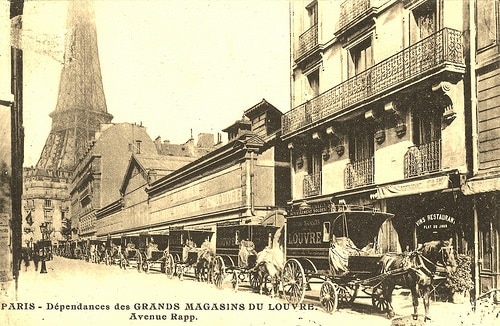Go Green for Earth Day!
20 April 2012From Funny to Fanciful and In-Between: New Arrivals in the Children’s Library
1 May 2012A Jesuit Sleuth in 17th Century Paris
In The Rhetoric of Death and The Eloquence of Blood (Berkley/Penguin 2010 and 2011), American writer Judith Rock brought 17th century Paris, ballet producing Jesuits, the college of Louis le Grand, Paris’s first police chief, outlaw Huguenots, seditious beggars, and fire-fighting Franciscans to historical mystery lovers. Based on her doctoral research (done in Paris), the novels garnered starred reviews from Kirkus, Publishers Weekly, Booklist, and Library Journal, and an Editors’ Choice review from the Historical Novel Society. In May, Judith returns to Paris at the invitation of the American Library to speak about the books–including the third, A Plague of Lies, which will be released in October, 2012. One reason she loves writing the series is that it lets her use all of her varied past: as professional dancer and choreographer, police officer, professor, playwright and actress. Judith will speak about The Eloquence of Blood on Wednesday, May 9 as a part of the Evenings with an Author series. She writes:
“Paris has long been famous as the home of expatriots. Sometimes, as I write my Charles du Luc historical mystery series, I think of myself as an expatriot in time. So much so, that when the wonderful invitation to speak at the American Library arrived, my first thought was, “The library is a long way outside the city wall. I wonder how long it takes to get there…”
My Jesuit sleuth and historical mystery series grew out of my doctoral research, done in Paris in the 1980’s. I researched the 17th and 18th century ballets produced by rhetoric teachers at the Jesuit school of Louis le Grand on the rue St. Jacques. My sleuth, Maître Charles du Luc, is a young ex-soldier turned Jesuit, who teaches rhetoric at Louis le Grand in the 1680’s.
In order for Charles to unravel mysteries, I have to unravel the mysteries of what Paris was like in his time. What did his Paris look like? How did people live? How did they think? Were they really different from us? Or were they just us in costumes–bravely making do without cell phones and Facebook and sidewalk cafés?
There were cafés, but the only sidewalks were on the Pont Neuf. And those were crowded with vendors’ stalls, and with pedestrians avoiding hurtling carriages and the occasional pair of duelists in the roadway. There was, of course, no Eiffel Tower, Arc de Triomphe, Champs Élysées, Louvre Museum. No Luxembourg Gardens, no grand Paris Opera building, no Haussman avenues and architecture. Medieval Paris was receding as modern Paris slowly took shape. The walls were coming down–faster on the Right Bank than on the Left. On my early 18th century map, Paris stretches only a dozen or so of our city blocks from its north wall to the river, and less than that from the river to the south wall. Its four or five hundred thousand people had long been spilling into the suburbs. Above all the crowding, Paris bristled with wooden cranes as new, classically designed brick and stone buildings went up–some people called Charles’s Paris “the new Rome.”
Charles solves mysteries that grow out of the real world he lives in. In The Rhetoric of Death, he’s caught in the Catholic-Protestant conflict that erupted after Louis XIV outlawed Protestantism in 1685. The Eloquence of Blood‘s mystery is spun from from the legal tangle of adoption in his time: illegal under formal law, legal according to customary law. In A Plague of Lies (out in October) Charles learns that Louis, “the Most Christian king,” is covertly supporting the Moslem Turks as they attack Eastern Europe. The books’ characters include real people from 1680’s Paris, like Nicolas de la Reynie, first head of its police, and Pierre Beauchamps, the great ballet master and dance director of the Paris Opera.
Charles’s fellow Parisians kept up with scientific discoveries: the first germs had been seen through microscopes, blood was known to circulate. People were globally connected: Siamese ambassadors came to the Louis le Grand ballet performance in 1686. And these same people believed that demons of the air caused thunderstorms and that the ringing of baptized church bells made the storms stop.
They weren’t just us in costumes. But when we “expatriate” in time and visit their world, we may find surprising perspective on our own–and on ourselves.”


